Artificial Intelligence (AI) is rapidly transforming our world, and at the forefront of this revolution is DeepSeek v3.
This groundbreaking model is not only pushing the boundaries of what’s possible in AI but also setting new standards for efficiency and performance.
In this article, we’ll delve into the innovations that make DeepSeek v3 a game-changer in the AI landscape.
- Introduction to DeepSeek v3: Revolutionizing AI
- Technical Advancements in DeepSeek v3
- Comparative Analysis: DeepSeek v3 vs. Competitors
- Applications and Implications of DeepSeek v3
- Challenges and Ethical Considerations of DeepSeek v3
- The Future of Artificial Intelligence with DeepSeek v3
- DeepSeek v3: Frequently Asked Questions
Introduction to DeepSeek v3: Revolutionizing AI
DeepSeek v3 represents a significant leap in AI technology.
Developed by the Chinese startup DeepSeek, this model has garnered attention for its remarkable capabilities and cost-effective development.
Unlike many of its predecessors, DeepSeek v3 was trained using a relatively modest amount of computing power, making it accessible and efficient.
One of the standout features of DeepSeek v3 is its open-source nature.
This openness not only fosters collaboration within the AI community but also accelerates innovation by allowing researchers and developers worldwide to build upon its foundation.
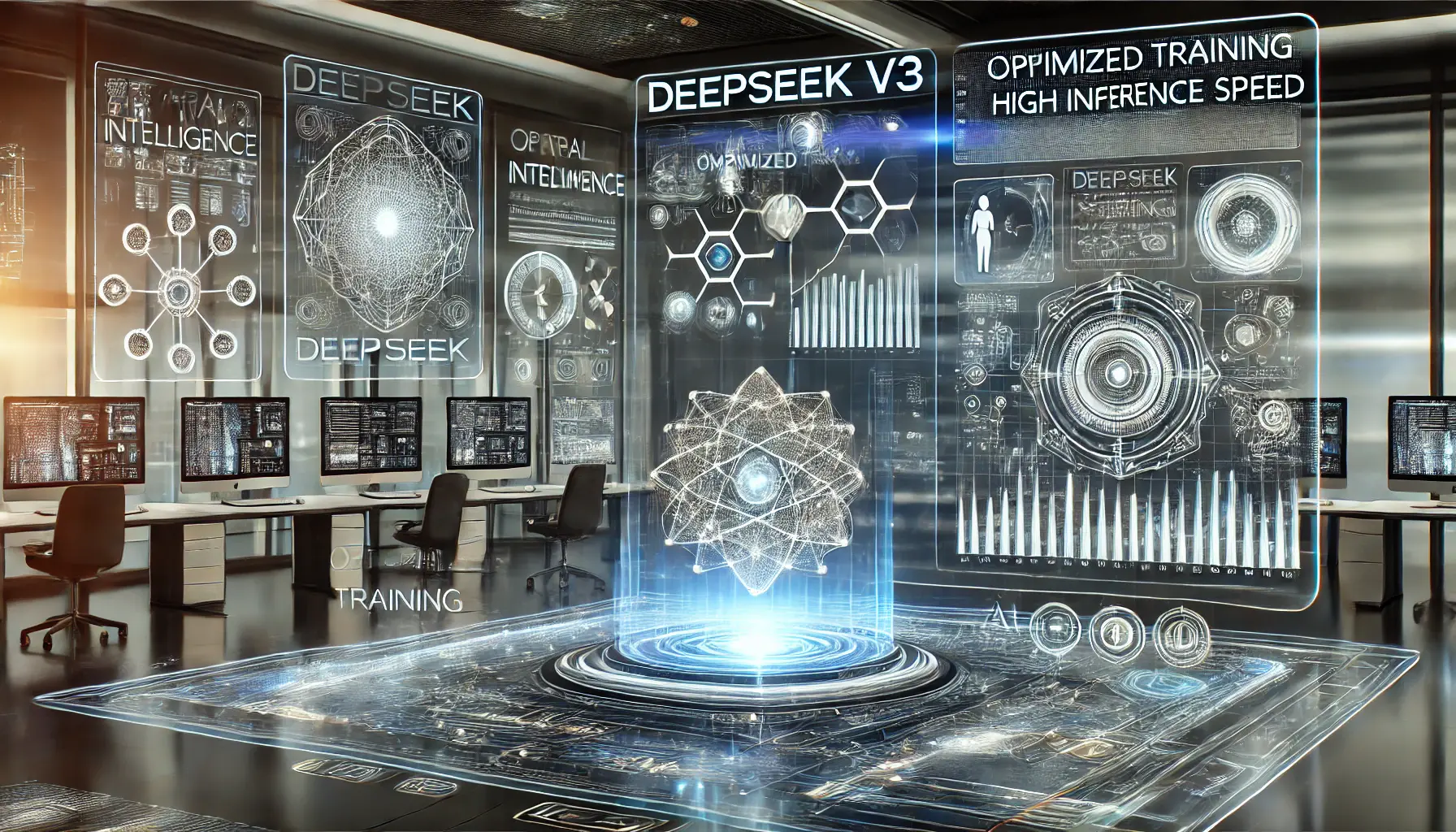
A high-tech AI interface showcasing DeepSeek v3’s advanced capabilities.
Key Features of DeepSeek v3
- Advanced model architecture for enhanced efficiency.
- Optimized training methods requiring less computational power.
- Open-source accessibility for global collaboration.
- High inference speed without compromising accuracy.
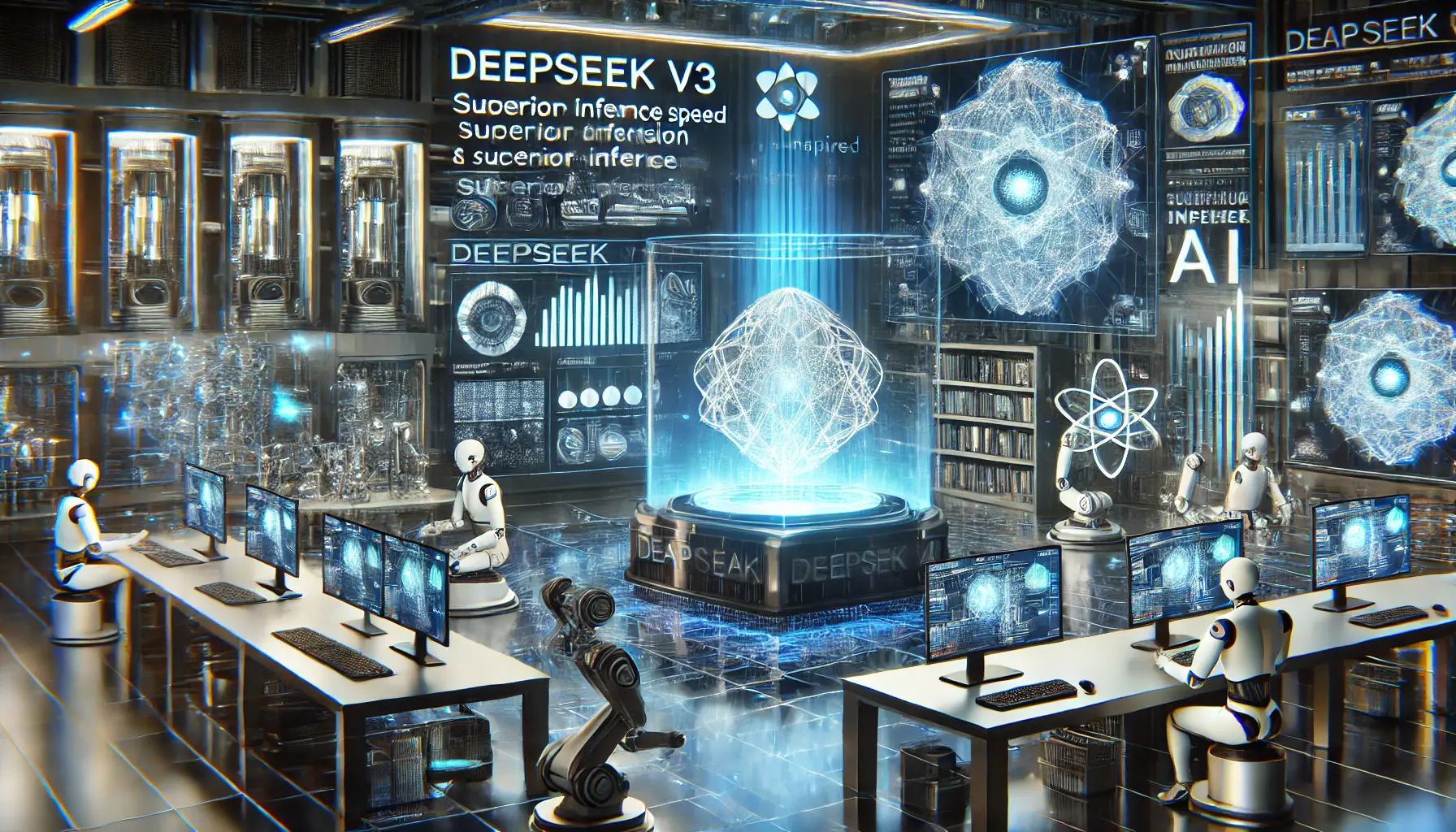
A high-tech AI lab showcasing DeepSeek v3’s exceptional performance and innovation.
Why DeepSeek v3 Stands Out
DeepSeek v3 has been recognized for its impressive inference speed, outperforming many existing models.
This efficiency doesn’t come at the expense of accuracy; in fact, it rivals some of the most advanced closed-source models available today.
Such a combination of speed and precision positions DeepSeek v3 as a formidable player in the AI arena.
As we explore the technical advancements and applications of DeepSeek v3, you’ll gain a comprehensive understanding of how this model is poised to revolutionize industries and redefine the capabilities of artificial intelligence.
DeepSeek v3 stands out due to its open-source nature and cost-effective development, making AI more accessible to researchers and developers worldwide.

A high-tech research lab illustrating DeepSeek v3’s cutting-edge AI innovations.
Technical Advancements in DeepSeek v3
The development of DeepSeek v3 marks a major breakthrough in AI technology, incorporating cutting-edge advancements that enhance both efficiency and capability.
Unlike traditional AI models that require extensive computational resources, DeepSeek v3 has been designed with an optimized architecture that maximizes performance while minimizing costs.
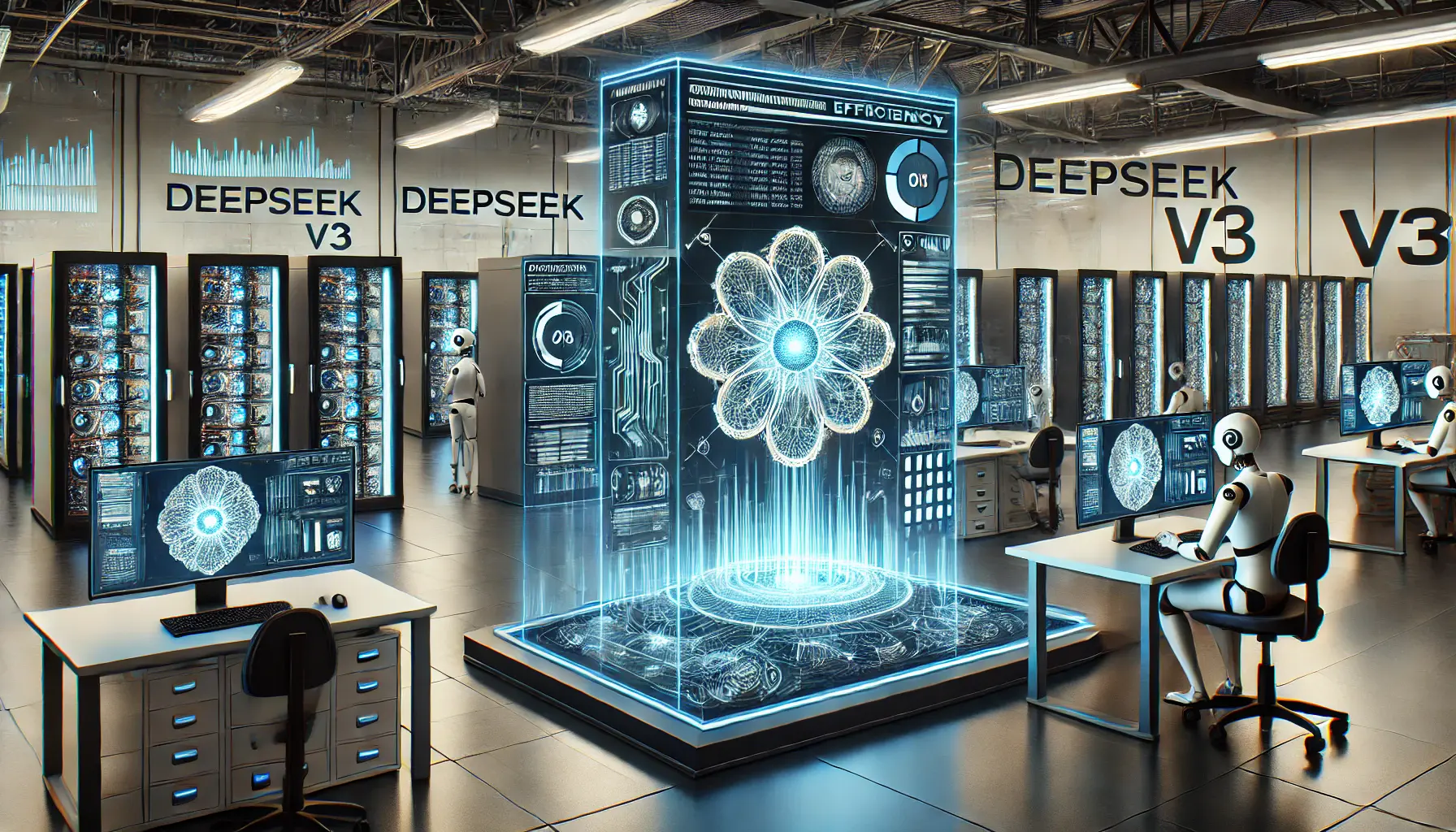
A cutting-edge AI training facility demonstrating DeepSeek v3’s optimized and efficient training methodologies.
Efficient Training Methodologies
One of the most notable aspects of DeepSeek v3 is its efficient training process.
By utilizing innovative training strategies, it achieves high-level performance with significantly lower computational power.
This is possible due to:
- Adaptive learning rates that optimize processing efficiency.
- Layer-wise training improvements that reduce redundancy.
- Fine-tuned pretraining models that enhance adaptability.
These advancements allow developers and researchers to train DeepSeek v3 without requiring access to massive clusters of GPUs, making AI development more accessible and cost-effective.

A visualization of DeepSeek v3’s innovative model architecture, featuring advanced AI structures and data pathways.
Innovative Model Architecture
The core of DeepSeek v3 lies in its advanced neural network architecture.
It integrates:
- Self-supervised learning techniques for enhanced adaptability.
- Transformer-based layers optimized for faster inference.
- Parallel processing capabilities that improve multitasking efficiency.
This structure not only improves the model’s performance in language processing but also makes it suitable for diverse AI applications, including content generation, automated reasoning, and multilingual translation.
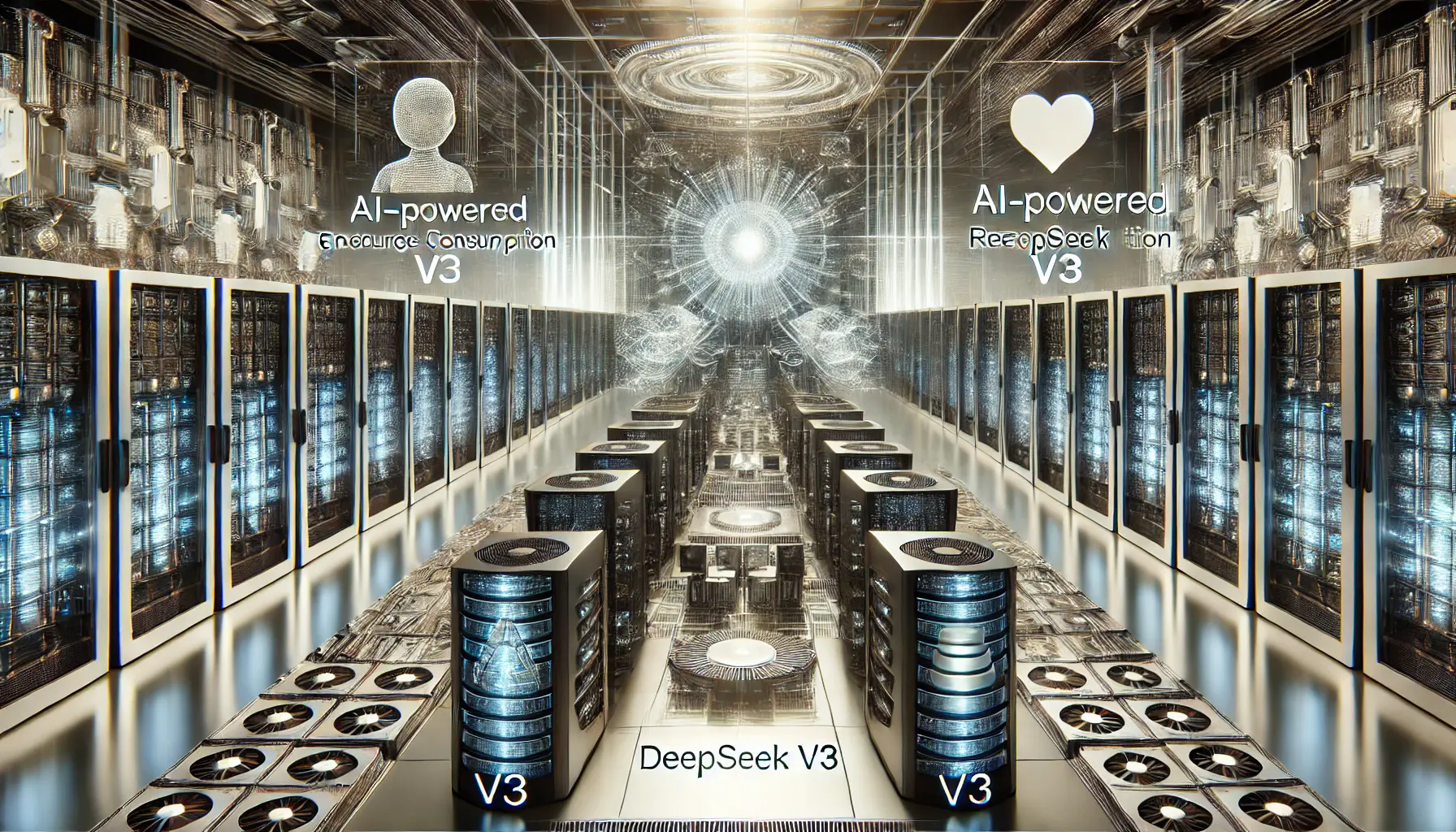
A futuristic data center illustrating DeepSeek v3’s resource optimization strategies with energy-efficient technologies.
Resource Optimization Strategies
Traditional AI models often require large-scale hardware resources, but DeepSeek v3 adopts a more sustainable approach.
The model’s developers have focused on:
- Reducing energy consumption during training and inference.
- Enhancing model compression without sacrificing accuracy.
- Implementing advanced caching mechanisms for faster execution.
By refining these aspects, DeepSeek v3 enables AI practitioners to deploy high-quality models without the heavy financial burden of excessive computational demands.
This makes AI research and application development more accessible, even for smaller teams and independent developers.
With these technical advancements, DeepSeek v3 is setting new standards in the AI industry.
In the next section, we’ll compare its capabilities against other leading AI models to see how it truly stands out in the competitive landscape.
DeepSeek v3’s efficient training methodologies significantly reduce computational requirements while maintaining high performance, making AI development more sustainable.
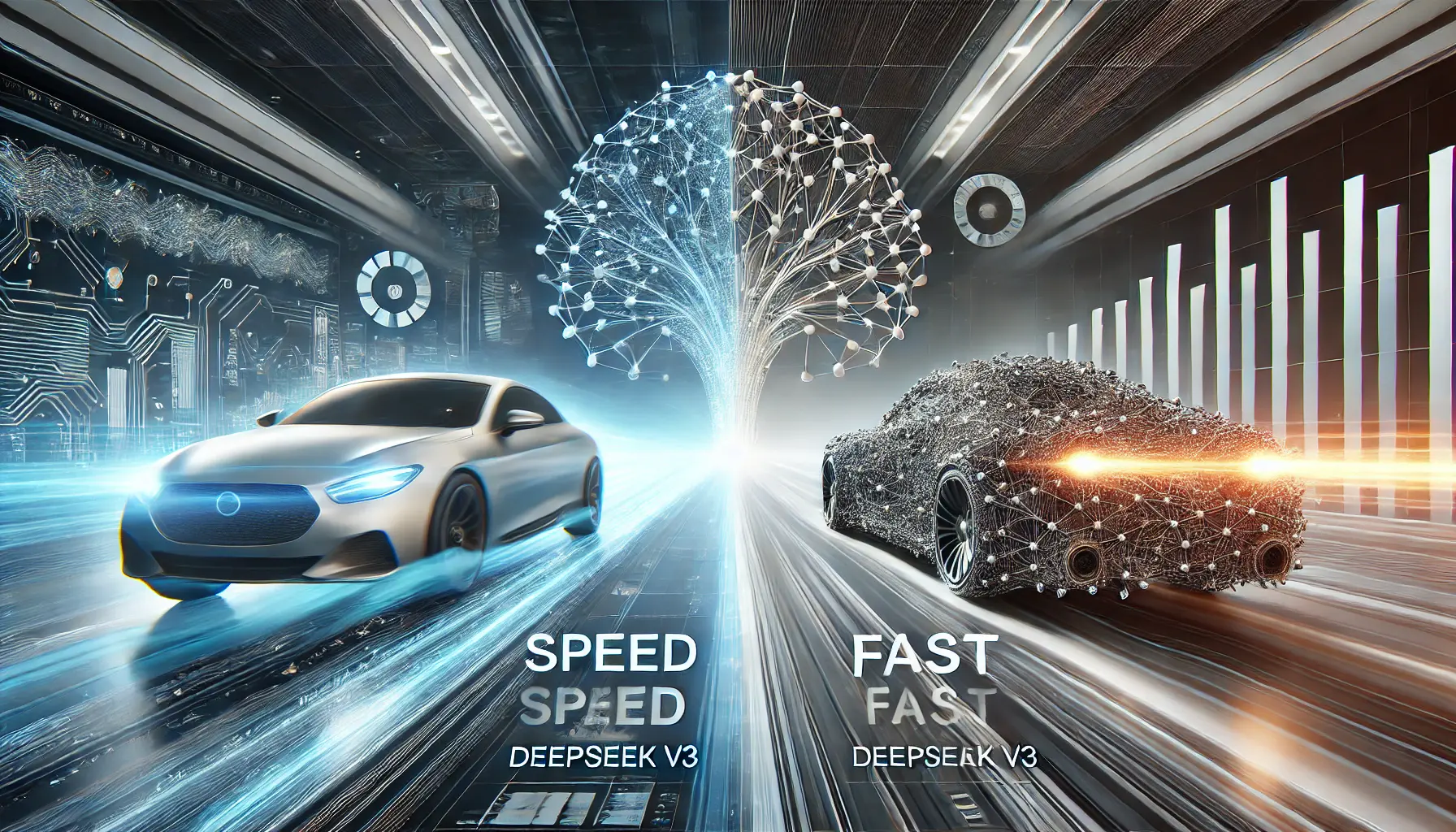
A comparison between DeepSeek v3 and a traditional AI model, highlighting DeepSeek v3’s superior speed and efficiency.
Comparative Analysis: DeepSeek v3 vs. Competitors
In the rapidly evolving field of artificial intelligence, it’s crucial to understand how DeepSeek v3 measures up against other leading AI models.
This comparison will help you appreciate the unique strengths and potential limitations of DeepSeek v3 in the broader AI landscape.

An advanced AI lab evaluating DeepSeek v3’s performance benchmarks, showcasing superior speed and accuracy.
Performance Benchmarks
When evaluating AI models, performance benchmarks are essential.
DeepSeek v3 has demonstrated impressive results in various assessments.
For instance, in natural language processing tasks, it has outperformed several competitors, showcasing its advanced capabilities.
Additionally, in coding and reasoning benchmarks, DeepSeek v3 has achieved higher scores, indicating its proficiency in complex problem-solving.
- Higher accuracy in language modeling compared to its predecessors.
- Superior performance in text generation and translation tasks.
- Enhanced reasoning capabilities, making it effective for problem-solving.

A high-tech data center demonstrating the cost-efficient deployment and energy-saving strategies of DeepSeek v3.
Cost Efficiency
One of the standout features of DeepSeek v3 is its cost-effective development.
Unlike many AI models that require extensive computational resources, DeepSeek v3 was trained using a relatively modest amount of computing power.
This efficiency translates into lower operational costs, making it an attractive option for organizations looking to implement advanced AI solutions without incurring prohibitive expenses.
- Requires fewer GPUs for training and deployment.
- Optimized architecture reduces power consumption.
- Lower infrastructure costs for businesses using AI at scale.
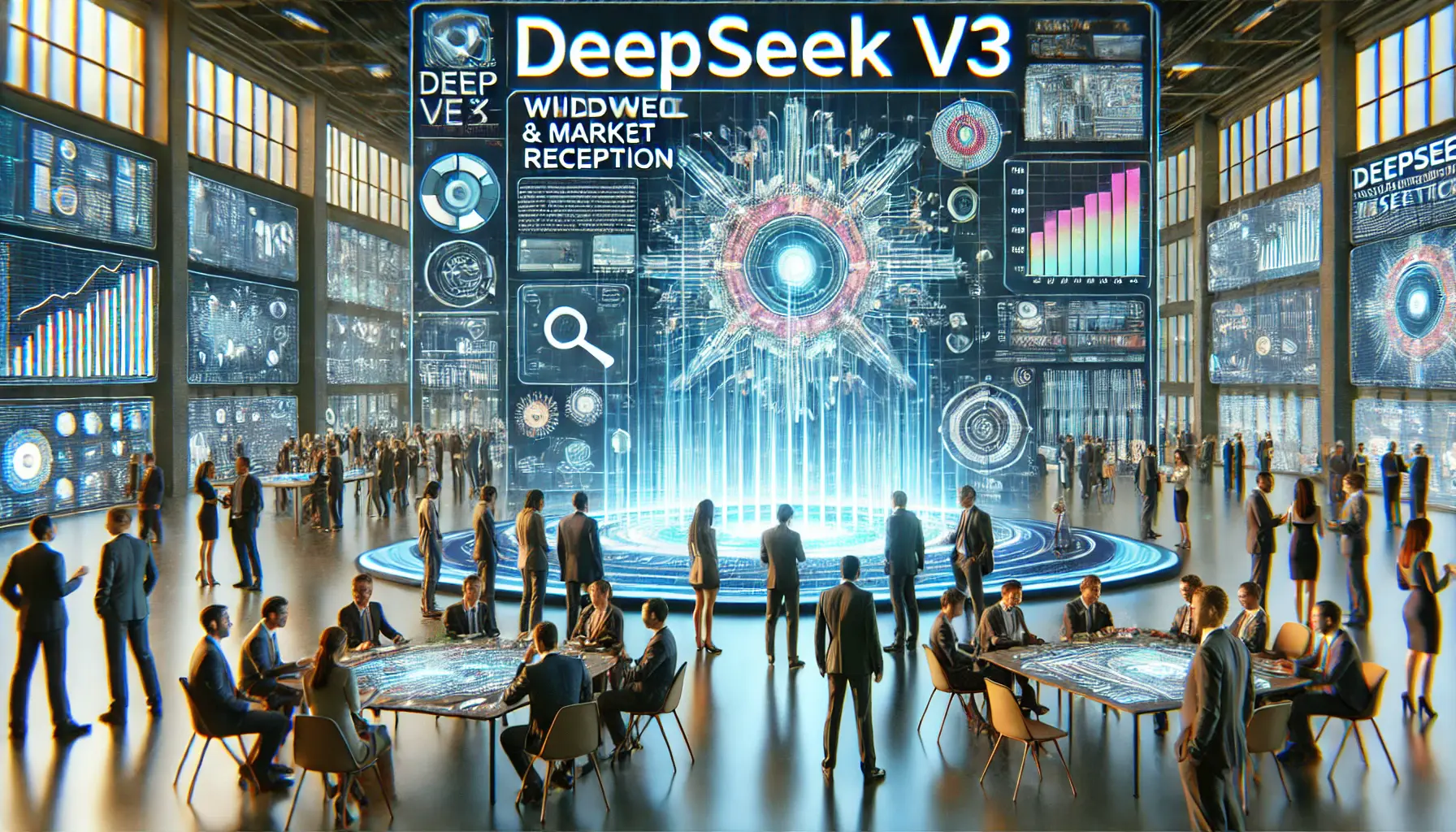
A high-tech exhibition highlighting the widespread adoption and positive reception of DeepSeek v3 in the AI community.
Market Reception
The market has responded positively to DeepSeek v3.
Its open-source nature has fostered collaboration within the AI community, leading to widespread adoption and adaptation across various industries.
Users have praised its versatility and performance, further solidifying its position as a leading AI model.
- Rapid adoption among AI researchers and developers.
- Increasing enterprise use cases due to its scalability.
- Consistently positive feedback on performance and accessibility.
Understanding these aspects of DeepSeek v3 in comparison to its competitors provides valuable insights into its place in the AI ecosystem.
In the next section, we’ll explore the practical applications and implications of DeepSeek v3 across different sectors.
DeepSeek v3 outperforms many competitors in cost efficiency and performance benchmarks, positioning itself as a strong alternative to closed-source models.
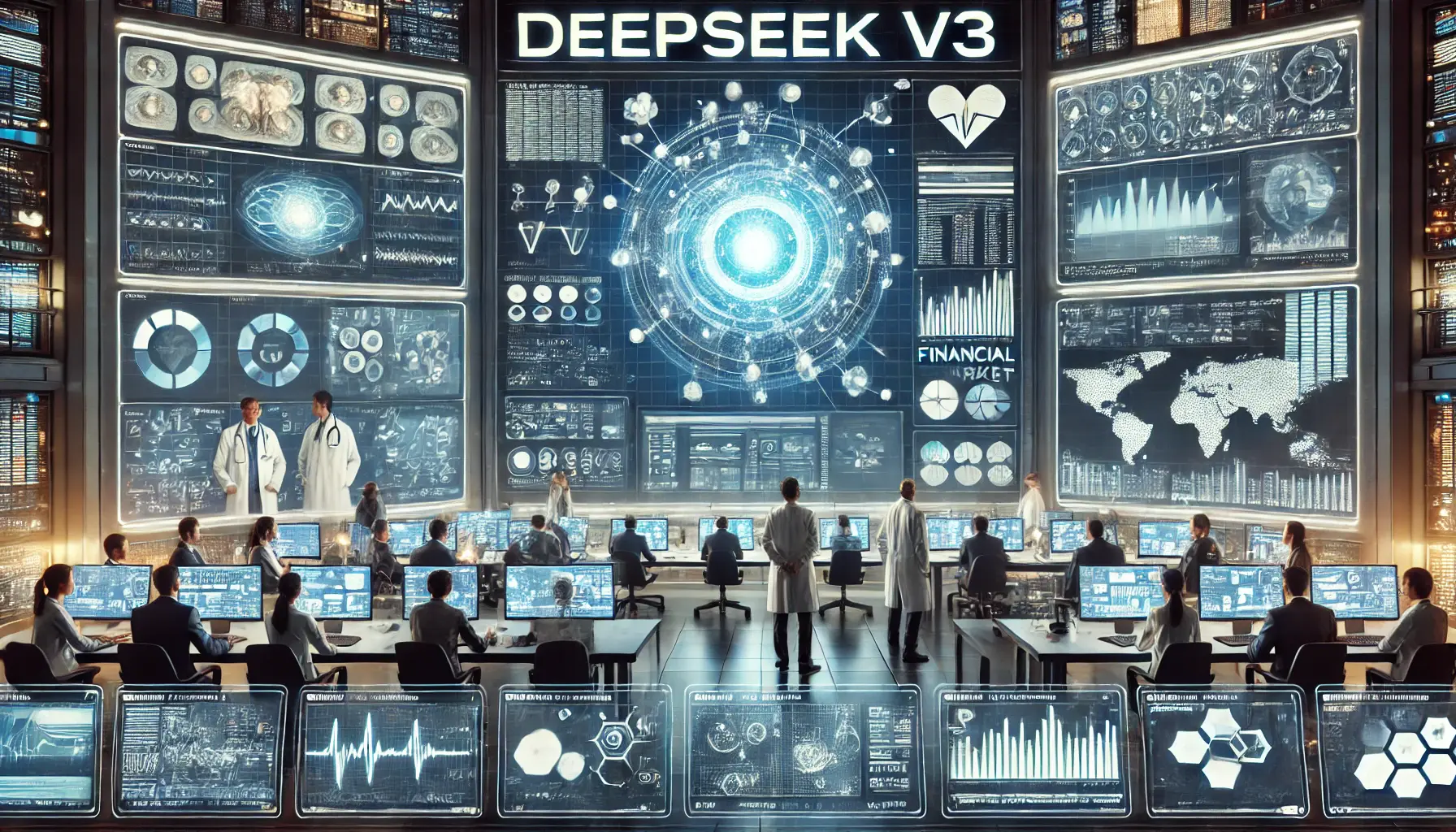
A control room showcasing the diverse applications and implications of DeepSeek v3 across multiple industries.
Applications and Implications of DeepSeek v3
The emergence of DeepSeek v3 has significant implications across various sectors, offering innovative solutions and prompting considerations about the future of artificial intelligence.
With its advanced capabilities, DeepSeek v3 is shaping industries and redefining AI-driven problem-solving.
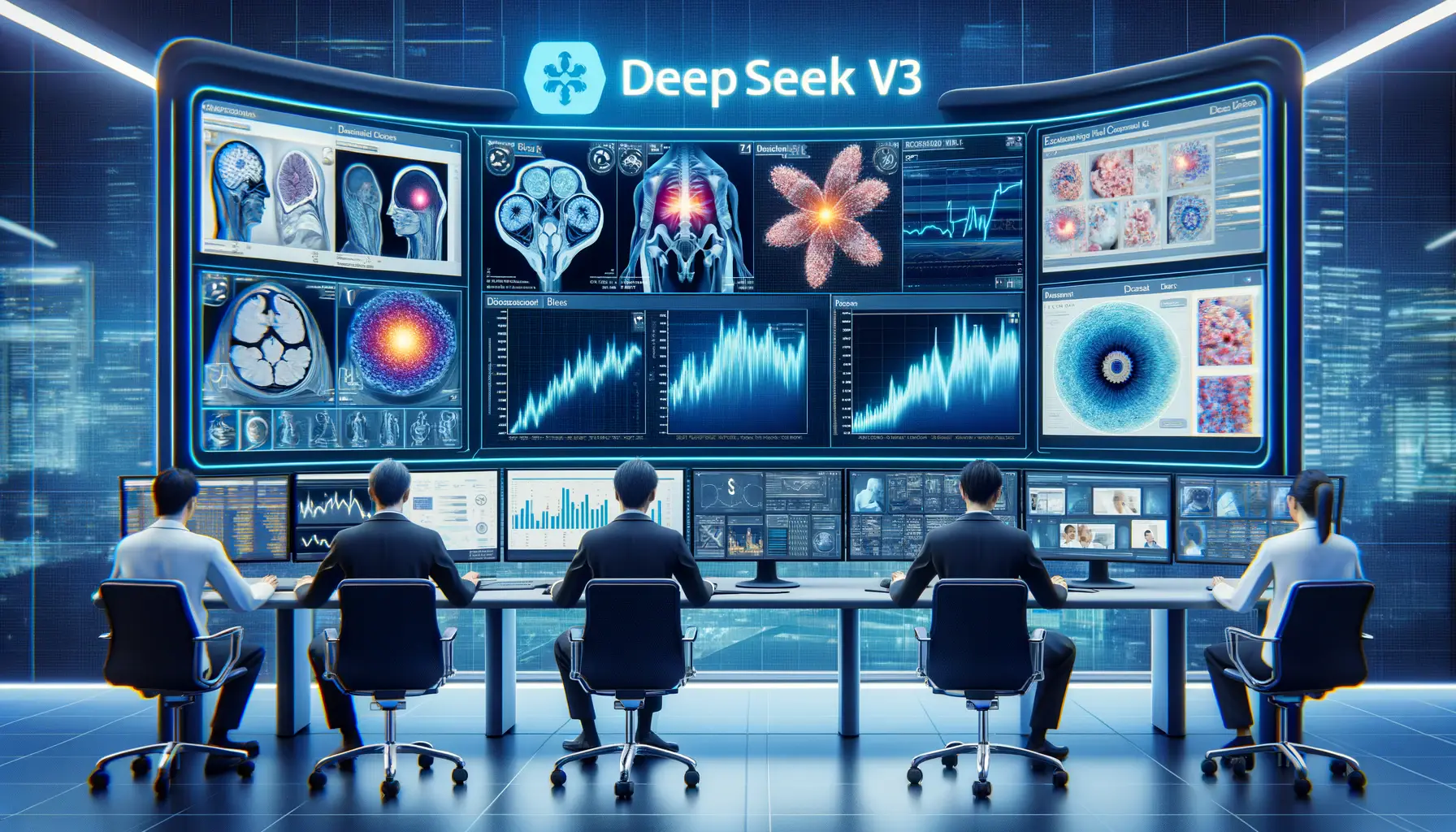
A control center demonstrating the real-world use cases of DeepSeek v3 in healthcare, finance, and content generation.
Real-World Use Cases
DeepSeek v3 is being utilized in several practical applications, proving its versatility and efficiency:
- Natural Language Processing (NLP): Enhancing machine translation, sentiment analysis, and chatbots to improve human-computer interactions.
- Programming Assistance: Aiding developers by generating code snippets, debugging, and providing solutions to complex coding challenges.
- Data Analysis: Assisting in processing large datasets to extract meaningful insights, benefiting industries like finance, marketing, and healthcare.
- Content Creation: Automating text generation for articles, blogs, and reports, helping businesses streamline content production.
- Autonomous Decision-Making: Implementing AI-driven insights for predictive analytics and automated decision-making systems.
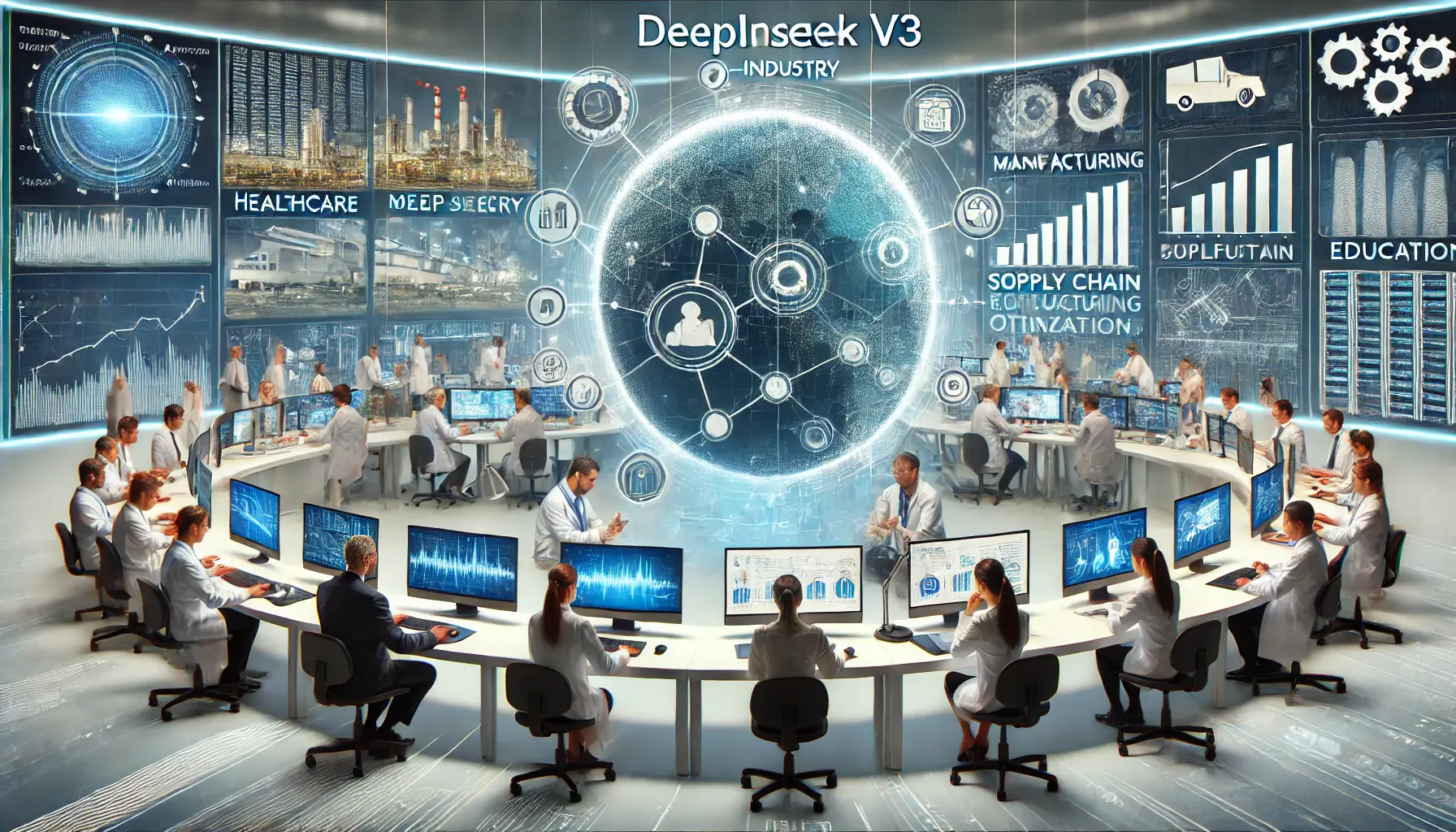
A multi-sector control center demonstrating DeepSeek v3’s impact on industries like healthcare, finance, manufacturing, and education.
Impact on Various Industries
The influence of DeepSeek v3 spans multiple sectors, driving efficiency and innovation:
- Healthcare: Supporting diagnostics through medical image analysis and predictive analytics, leading to more accurate patient outcomes.
- Finance: Enhancing fraud detection, algorithmic trading, and risk assessment by analyzing vast amounts of financial data in real-time.
- Manufacturing: Optimizing supply chain management, predictive maintenance, and automated quality control for increased operational efficiency.
- Marketing: Personalizing customer experiences through AI-driven recommendations and data analysis.
- Education: Powering AI tutors and automated grading systems to enhance learning experiences.

A high-tech lab illustrating the future potential of DeepSeek v3, including advancements like multimodal AI and global integration.
Future Prospects
Looking ahead, DeepSeek v3 is poised to drive further advancements in artificial intelligence.
Key developments include:
- AI Democratization: Its open-source nature encourages widespread adoption and innovation, allowing organizations of all sizes to leverage advanced AI capabilities.
- Ethical AI Development: Promoting responsible AI use by providing a transparent framework for development and deployment.
- Continuous Improvement: Ongoing community contributions are expected to enhance the model’s performance and expand its applicability.
- Enhanced Multimodal AI: Potential future upgrades could integrate text, image, and voice processing into a unified system.
As DeepSeek v3 continues to evolve, its applications and implications will likely grow, influencing various aspects of technology and society.
With its combination of efficiency, cost-effectiveness, and versatility, DeepSeek v3 is shaping the next era of artificial intelligence.
The adoption of DeepSeek v3 across industries such as healthcare, finance, and education showcases its transformative potential in AI-driven solutions.
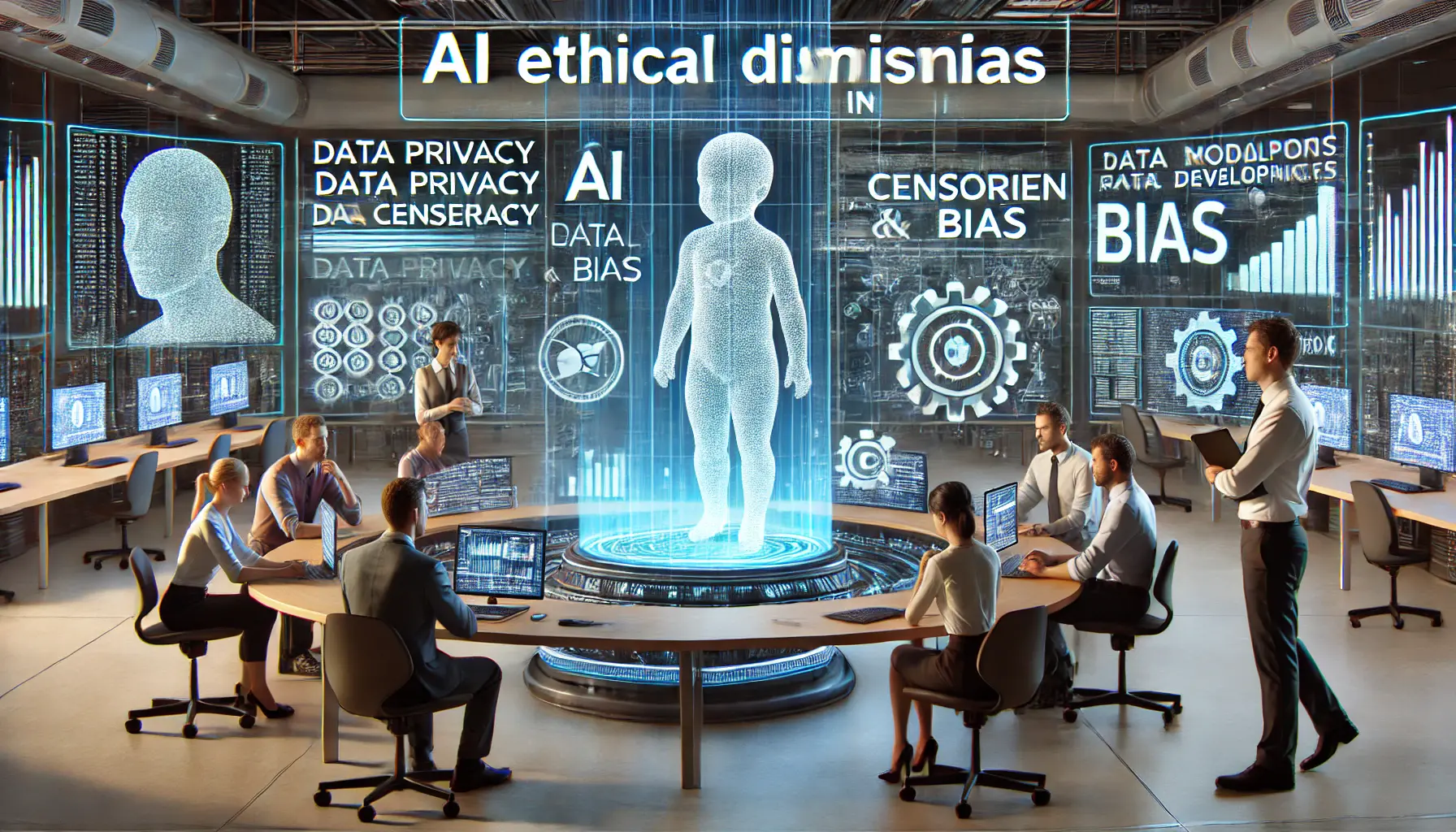
A high-tech lab exploring the ethical challenges in AI development, focusing on issues like privacy, censorship, and bias.
Challenges and Ethical Considerations of DeepSeek v3
While DeepSeek v3 represents a significant advancement in artificial intelligence, it also raises important ethical and security concerns that warrant careful examination.
As AI technology continues to evolve, addressing these concerns is essential to ensure responsible development and usage.

A cybersecurity environment focused on safeguarding AI systems and ensuring data privacy and security.
Data Privacy and Security
One of the primary concerns surrounding DeepSeek v3 is data privacy and security.
Since the model operates on servers located in China, there are apprehensions about potential access by the Chinese government.
This has led organizations, including the U.S.
Navy, to restrict the use of DeepSeek v3 due to security concerns.
- Potential government access to stored user data.
- Uncertainty regarding compliance with global data protection regulations.
- Risk of data leaks or unauthorized use of AI-generated content.

A control room where AI models are evaluated for content moderation, fairness, and bias in decision-making.
Content Censorship and Bias
Reports indicate that DeepSeek v3 incorporates censorship mechanisms aligned with Chinese government policies.
The model may avoid or restrict discussions on sensitive topics, such as political events or human rights issues.
This built-in bias raises ethical concerns about objectivity, fairness, and the completeness of the information provided by the AI.
- Potential suppression of politically sensitive content.
- Bias in AI-generated responses based on regional regulations.
- Concerns about misinformation and limited perspectives.

A legal office focusing on the intellectual property and legal implications of AI technologies and patent protection.
Intellectual Property and Legal Implications
Users of DeepSeek v3 must be aware of the legal considerations when utilizing AI-generated content.
The platform’s terms of use require clear attribution of AI-generated outputs and verification of their authenticity.
Additionally, there are restrictions against using the model in ways that could disrupt online platforms or violate ethical AI standards.
- Legal obligations to disclose AI-generated content.
- Restrictions on using AI for deceptive or unethical purposes.
- Unclear liability for misinformation generated by AI.

A global setting illustrating the reception of AI technologies and international regulatory efforts for compliance.
Global Reception and Regulatory Actions
The international response to DeepSeek v3 has been mixed.
While its technological achievements are widely recognized, several governments have expressed concerns over data security and regulatory compliance.
This has led to investigations and, in some cases, restrictions or outright bans in certain regions.
- Scrutiny from global regulators regarding compliance with privacy laws.
- Restrictions on AI deployment due to geopolitical concerns.
- Varying acceptance based on regional AI governance policies.
As DeepSeek v3 continues to evolve, developers, users, and policymakers must work together to address these ethical and security challenges.
Striking a balance between AI innovation and responsible usage will be critical in shaping the future of AI technology.
Security concerns regarding data privacy and potential censorship in DeepSeek v3 highlight the need for transparency and ethical AI governance.
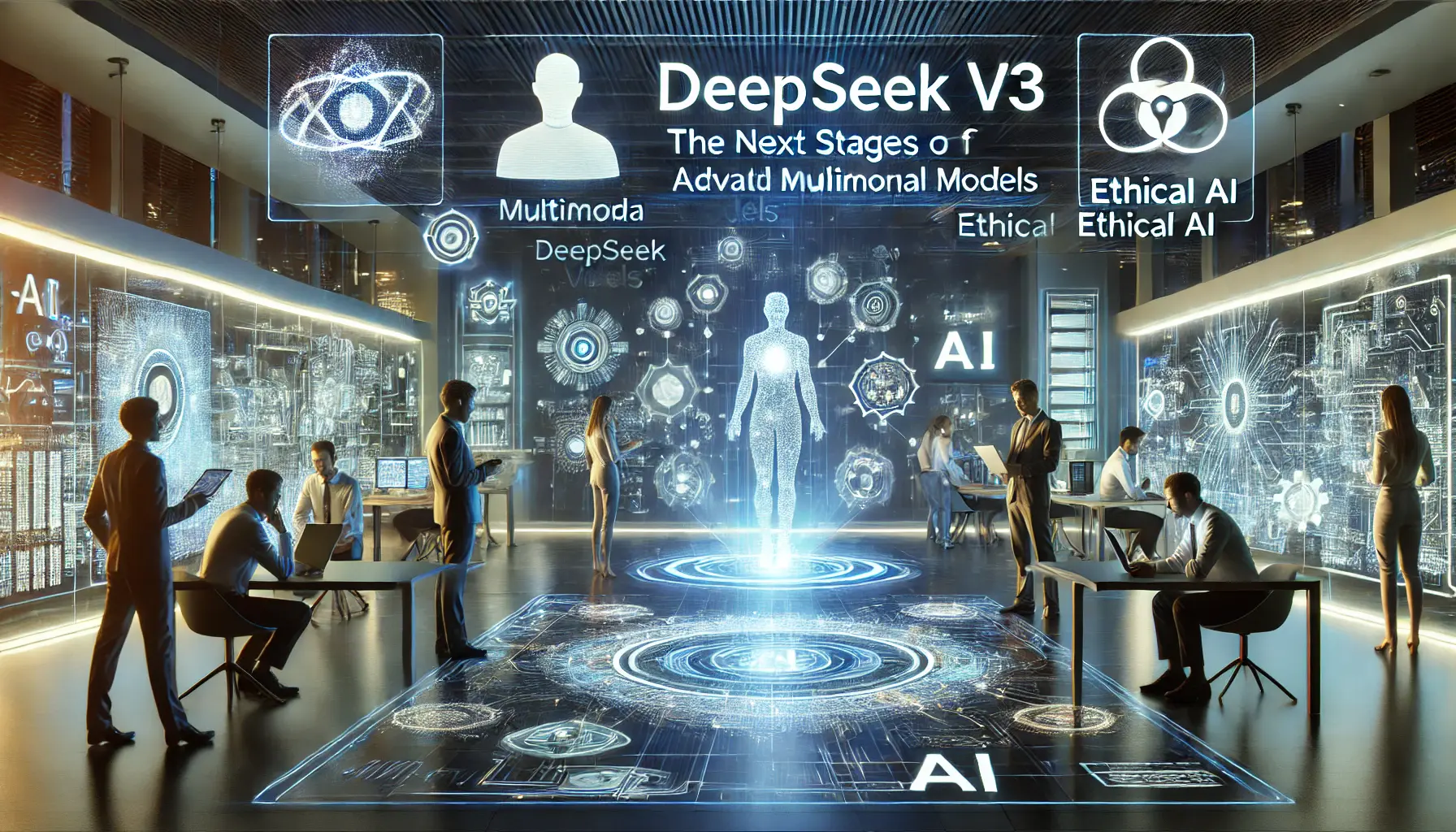
A high-tech lab illustrating the future evolution of DeepSeek v3, with AI professionals exploring next-generation AI models.
The Future of Artificial Intelligence with DeepSeek v3
DeepSeek v3 stands at the forefront of artificial intelligence, redefining efficiency, accessibility, and innovation.
Through its groundbreaking advancements in model architecture, cost-effective training methodologies, and open-source accessibility, it has positioned itself as a strong competitor in the AI landscape.
From revolutionizing industries to raising ethical considerations, DeepSeek v3 continues to shape the future of AI.

A high-tech control room showcasing the key takeaways from DeepSeek v3, including its efficiency, performance, and ethical considerations.
Key Takeaways from DeepSeek v3
Throughout this article, we have explored various aspects of DeepSeek v3.
Here are the major insights:
- Technical Advancements: DeepSeek v3 has introduced optimized neural networks, self-supervised learning, and efficient resource management, making AI more accessible and powerful.
- Comparison with Competitors: It has demonstrated superior performance in benchmarks, cost efficiency, and user adoption, positioning itself as a significant alternative to leading AI models.
- Real-World Applications: Industries such as healthcare, finance, education, and marketing are leveraging DeepSeek v3 for enhanced data processing, automation, and decision-making.
- Ethical and Security Challenges: Despite its strengths, DeepSeek v3 raises concerns about data privacy, content censorship, and AI governance, leading to global debates on its responsible use.
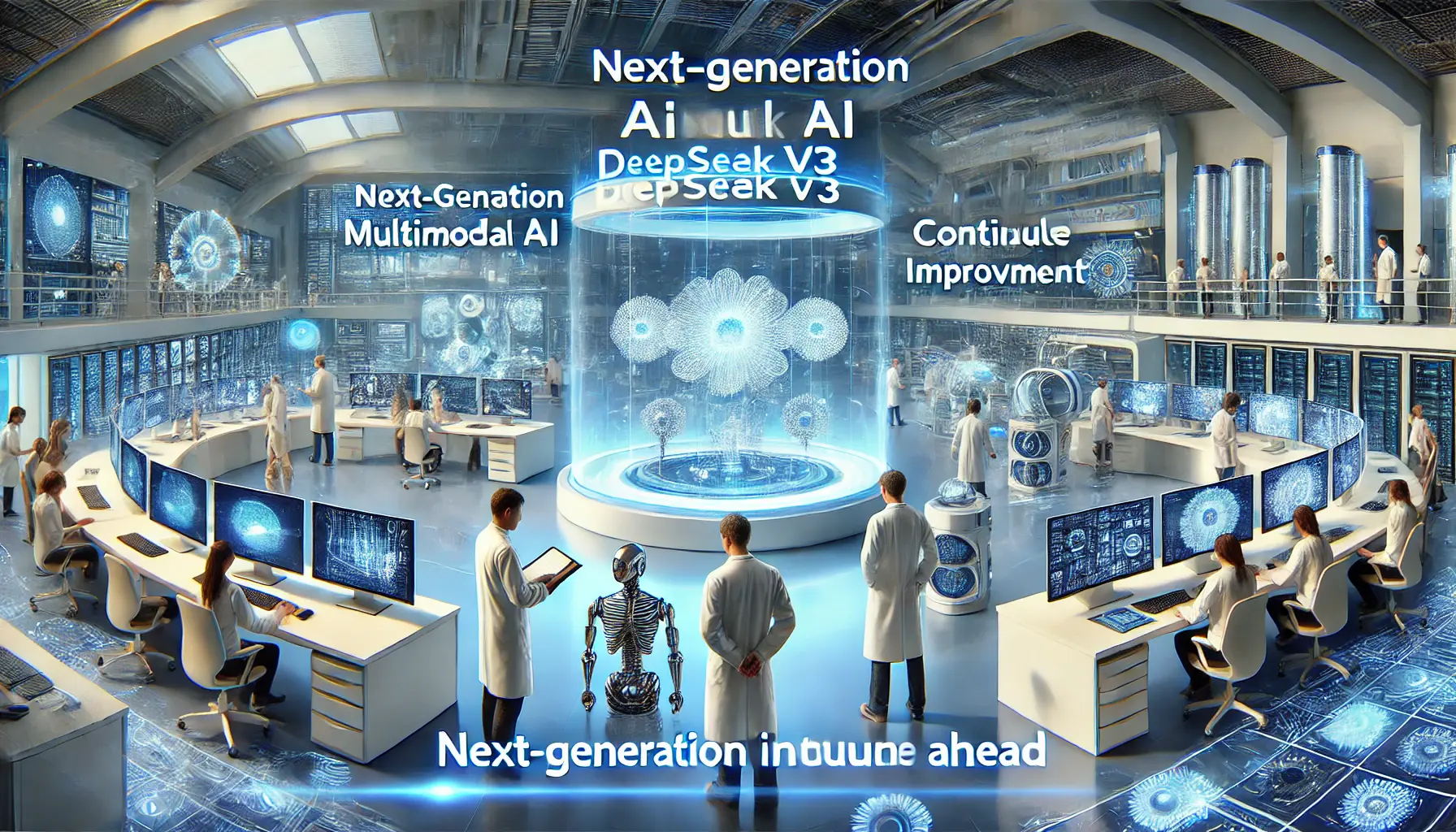
A high-tech research lab exploring the future of DeepSeek v3, including next-generation AI models and advancements.
What Lies Ahead for DeepSeek v3?
The journey of DeepSeek v3 is far from over.
As AI technology evolves, we can expect:
- Continued Advancements: Future iterations of DeepSeek v3 may introduce multimodal AI capabilities, combining text, image, and speech processing for even more versatile applications.
- Stronger Regulatory Frameworks: With increasing global scrutiny, AI governance policies will likely evolve to address data security, bias, and ethical deployment concerns.
- Expanding AI Integration: More businesses and developers will adopt DeepSeek v3, further driving AI-powered innovations across multiple industries.
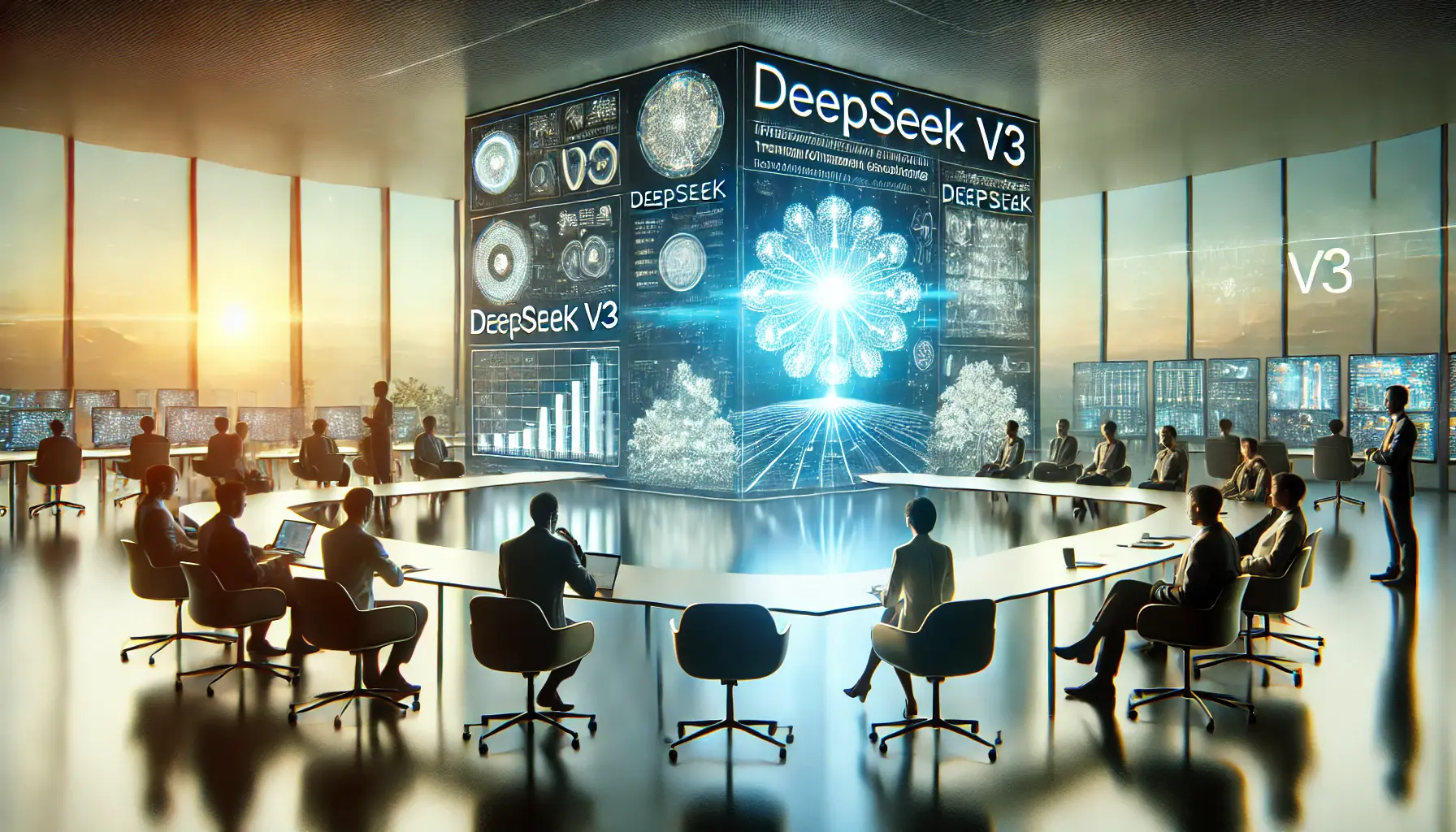
A reflective setting symbolizing the final thoughts on DeepSeek v3’s impact on the future of AI.
Final Thoughts
DeepSeek v3 is not just another AI model; it represents a shift toward a more accessible and efficient artificial intelligence ecosystem.
As it continues to grow, the AI community must work collaboratively to ensure that its potential is harnessed responsibly.
Whether it’s improving business operations, enhancing human-computer interactions, or addressing ethical concerns, DeepSeek v3 is set to leave a lasting impact on the AI landscape.
As we step into the future of AI, the question remains: How will DeepSeek v3 shape the next era of technological evolution?
Its capabilities, challenges, and opportunities will define the path forward for AI-driven innovations.
As AI regulations evolve, the future of DeepSeek v3 will depend on balancing innovation with responsible AI development and global compliance.
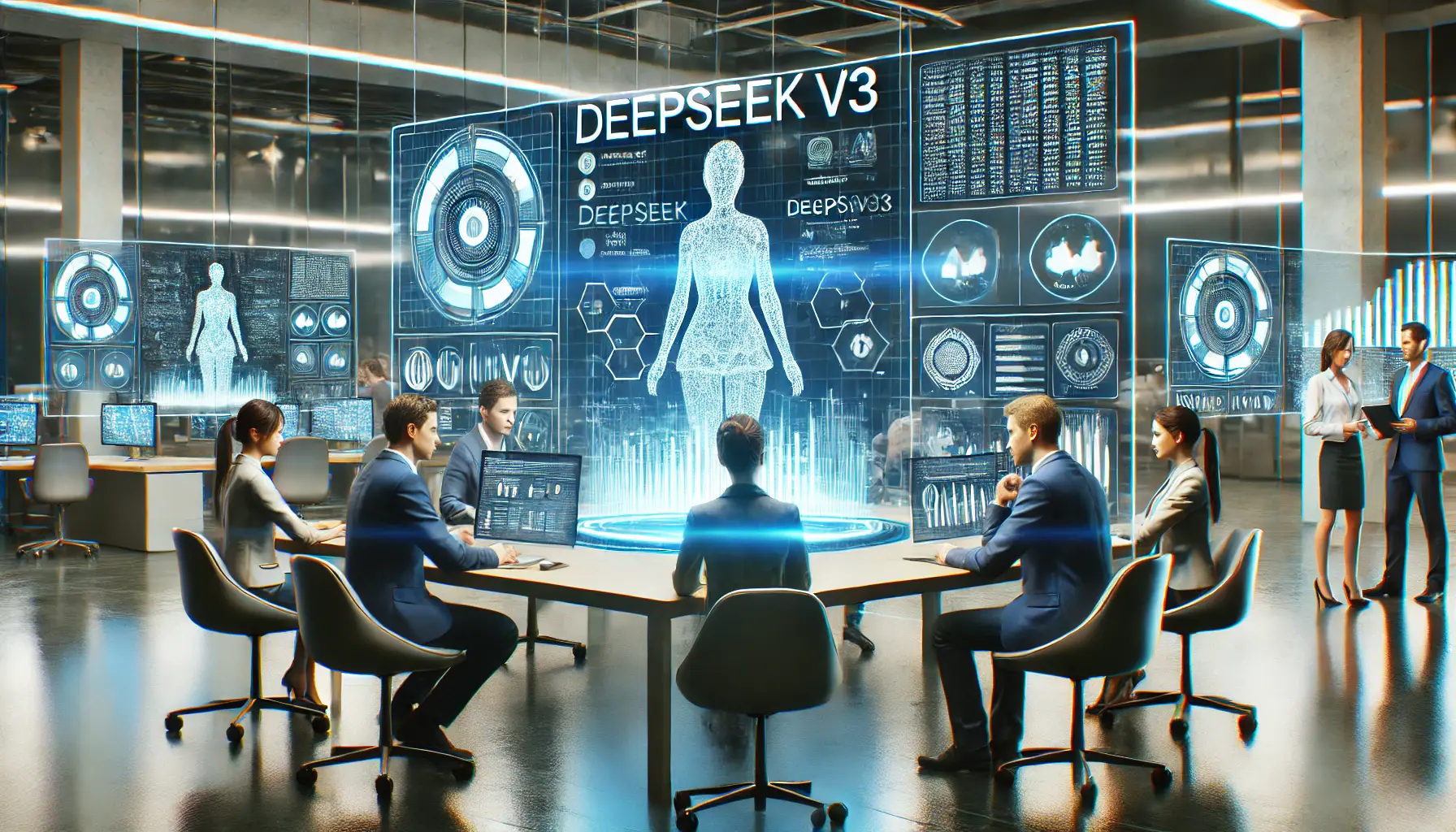
A modern AI support center dedicated to answering frequently asked questions about DeepSeek v3.
DeepSeek v3: Frequently Asked Questions
As DeepSeek v3 continues to gain attention in the AI community, several common questions have emerged.
Below, we address some of the most frequently asked questions to provide clarity and insight into this innovative model.
DeepSeek v3 features a Mixture-of-ExpertsAn AI model architecture that divides tasks among specialized sub-models to improve efficiency and accuracy. architecture with 671 billion parameters, significantly enhancing performance across various AI tasks while optimizing computational efficiency.
You can access DeepSeek v3 through its online demo platform, API services, or by downloading model weights for local deployment.
DeepSeek v3 performs exceptionally well in mathematics, coding, reasoning, and multilingual tasks, consistently ranking high in AI performance benchmarks.
Yes, DeepSeek v3 supports commercial use, subject to the licensing terms outlined by its developers.
DeepSeek v3 outperforms many open-source AI models and matches leading closed-source models in various performance evaluations.
DeepSeek v3 supports deployment on NVIDIA GPUs, AMD GPUs, and Huawei Ascend NPUs, offering compatibility with multiple AI frameworks.
DeepSeek v3 features a 128K context windowThe amount of preceding text an AI model considers when generating responses or making predictions., allowing it to process extensive input sequences efficiently for complex tasks.
DeepSeek v3 was pre-trained on 14.8 trillion diverse tokens, followed by supervised fine-tuningA process in which an AI model is trained using labeled data to improve its performance on specific tasks. and reinforcement learning optimization.
The web version of DeepSeek v3 is currently free to use, while API access requires payment under a competitive pricing structure.















